- are interested in comprehensible teaching strategies
- have to follow your school’s designated curriculum
- still teach grammar, but hope to do so in a more mindful and purposeful way
- want to help your students feel confident even when faced with a difficult topic
- want to learn more about the process in my SEMILLAS Spanish Digital Interactive Notebooks
- need ideas specifically for teaching the present subjunctive (however these strategies can be applied to any vocabulary or grammar topic!)
Do you teach grammar explicitly? Because… I do.
It might not be very often, and it might not always be the way that you think. I have found a balance that works for me and my students.
Comprehensible teaching strategies have helped many teachers absolutely transform their teaching styles. Teachers are more able to focus on the big picture; we are focused on what our students CAN do instead of what they can’t. We are providing repetition and increased input before demanding output from our students. We are far less grammar-focused.
From what I have seen personally, teachers are more confident in their lessons and students are more active participants in their classrooms.
Some teachers have completely changed their curriculum and taken on a full “comprehensible teaching” approach, while many of us have seen greater learning outcomes with incorporation of even just a few of these strategies. The truth is, the majority of teachers have a designated curriculum to follow. Some of us have flexibility to adjust our practices based on our teaching styles, and some have full permission to adjust the curriculum as they see fit. Personally, I have not had the flexibility to completely change my curriculum. Instead, I have adapted as much as I can to provide comprehensible input for my students while meeting the expectations of our existing curriculum. I am still finding new ways to incorporate comprehensible strategies every day. I am always learning.
My department has a textbook and sequence that we are expected to follow. Over the past 6 years in this district, I have slowly moved away from the textbook. I have created all of my own materials so that my students have not had to touch the textbook in over a year, however, I still must teach the themes that are covered within the textbook chapters. Yes, this includes grammar! I know many teachers may gasp at the fact that I still teach grammar explicitly, but I honestly love the current balance I have. These strategies have worked for me and for my students under our current curriculum as it stands. If change is coming to my department in the future, I will embrace it and find a new balance 🙂
If you are still reading, and you haven’t run away because I mentioned grammar, I will explain my favorite strategies below. I hope that some of these ideas can help you, wherever you may fall on the spectrum of teaching grammar explicitly vs. leading a completely comprehensible input-based classroom.
My strategies to make grammar more comprehensible
Just because I have to teach grammar doesn’t mean I have to teach it in the traditional way.
I do not have to make my students stare at examples in an outdated textbook. I do not have to make them take pages and pages of notes. I do not have to give them worksheets with conjugation drills. I do not have to lecture.
Instead… I can provide comprehensible examples from the very start that offer lots and lots of input. I can build their confidence and help them to think critically and make connections. And finally, I can provide them will practical options for output even from the very beginning!
For the sake of this walkthrough, I will use photos I happen to have from the last time I introduced the present subjunctive in my Spanish 3 and Spanish 3 Honors classes. These strategies can be used for any unit, but it helps me to speak about one specific example. That way I can show you photos, too! These photos are all from the very first day of our present subjunctive unit. They showcase some of my favorite ways to cover grammar in a way that I feel is mindful, comprehensible, and productive for my students.
If you would like to utilize resources that align with the strategies in this blog post, be sure to check out my Semillas Spanish Digital Interactive Notebooks. I designed these notebooks to be used in person or digitally – you can print them as-is, or students can type directly into the editable Google Slides document. All student workspaces and teacher examples are EDITABLE so that you can truly customize them to meet your class needs. You will see more about these notebooks later in this post!
SEMILLAS STEP 1: INTRODUCCIÓN
FOCUS: INPUT + DISCOVERY
When my students entered class that day, I had these example sentences on the board.
1) Me alegra que mis amigos me visiten.
2) Es importante que coma la fruta.
3) Recomiendo que duermas por 8 horas.
4) Espero que mis estudiantes estudien.
5) Dudo que Gronk juegue otra vez.
6) Ojalá que no tengamos escuela en julio.
My students had never seen the present subjunctive before. We had never discussed the use of “que,” the sentence starters, the changing ending vowels… any of it. They walked in to a brand new concept and I immediately expected them to read and examine it.
I asked my students to chat in their small groups about what they saw on the board (they sit in groups of 4-5 every day, you can see my post about seating and grouping here). I asked them to see if they could identify the verbs in each sentence, and I prompted them to look for patterns. What did the sentences mean? I asked them to make inferences. Who were the sentences about? Who was speaking? What patterns did they find? What did they think were the essential pieces of each sentence?
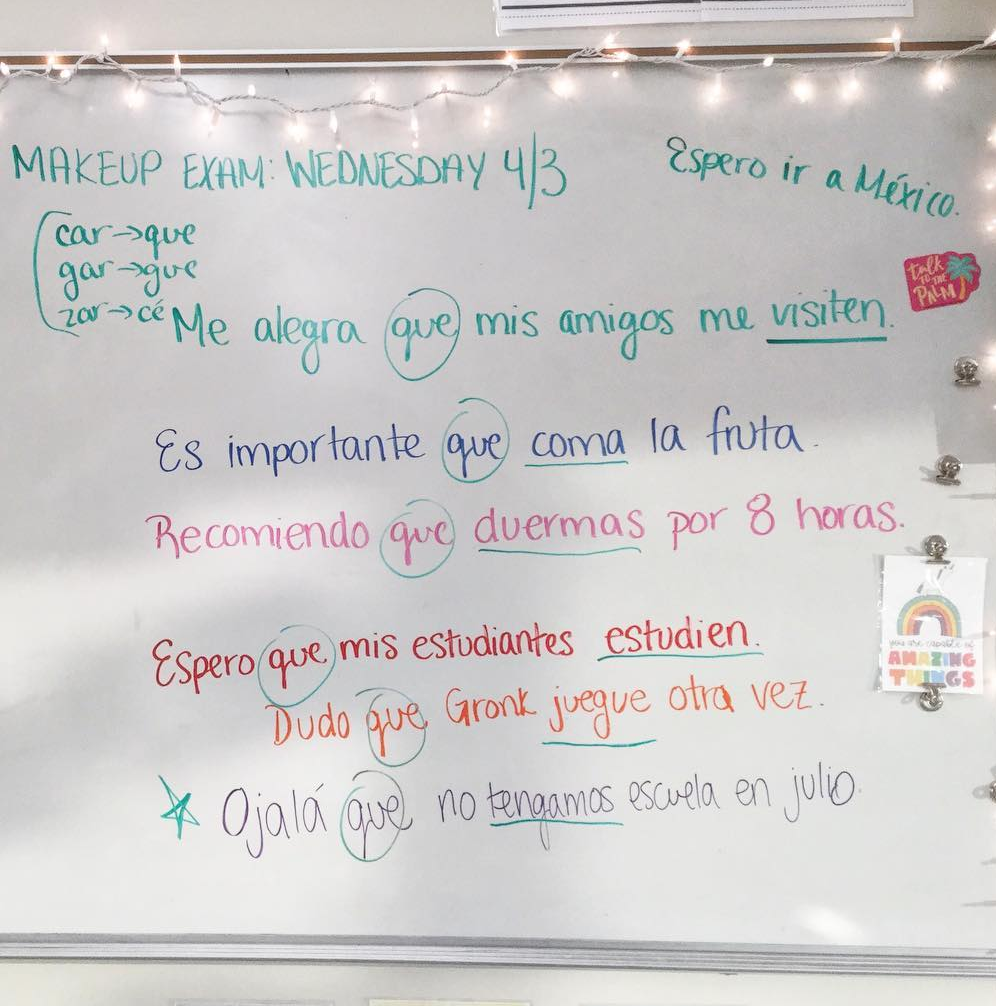
I walked around and listened to their discussions. After a few minutes, I stood at the board and asked them what they found. You can see the photo below to see what my students discussed. My students noticed the pattern of QUE being needed- they had me circle that in each example sentence. They noticed that there was a verb (sometimes with a subject, sometimes without) after the “que.” They had me underline those, because they knew those verbs must be important. The patterns looked different, yet familiar somehow. Why was that?
We also discussed the phrases before the “que”. Because of these phrases (and the cognates I chose to use), my students were able to infer the uses of this tense. We spoke about Ojalá, which they hadn’t seen before. That was the only word on the board that I had to explain explicitly. My students asked me to star that one, since there was no starting subject/conjugation before the “que.”
We discussed what happened to dormir, jugar, and tener in the examples. What did they notice? What might that mean about this tense, and how we use it?
(You can see some of my notes in green that were added at this point. My students remembered car gar zar changes, they told me that dormir proved that stem changes would apply in this tense, and they knew the “g” in tengamos must have come from the present indicative yo form. They KILLED it!!!)
We talked about the subject change in each of the examples, and what that might mean. So then, what questions did they have? How would we express a hope about ourselves? (Again you can see my example added in green at this point, Espero ir a México. So now, what was missing from this sentence? Why?)
We discussed A LOT aloud, and I wrote some things on the board as we went. I left these sentences on the board, with our notes, for reference for the rest of the class period.
SEMILLAS STEP 2: APUNTES
FOCUS: GUIDED NOTES + PREDICTIONS. Student-lead, with my guidance (in the background as much as possible)
I wish I took a “before” photo of the guided notes board, but of course I didn’t think of that. When we are in any grammar unit, I try not to provide my students with all of the notes. I also don’t want them just mindlessly copying out of a textbook. Instead, I do my best to provide a template on the board that we then fill in together.
My goal during this step is to say as little as possible; I try to ask lots of questions, and motivate my students to discover the language based on the examples we covered in the warm-up activity. I give a lot of wait time during this step- I ask probing questions and provide a lot of positive reinforcement, along with small clues disguised as questions. I want my students to know that they CAN do it. If they get really stuck on one part, I will of course help them. They get really excited, though, if they can fill in the notes for a BRAND NEW concept with so little help from me! I am always very mindful with the examples I use during the warm-up so that they can reference that activity during the guided notes section. I challenge you to try this, to see how your students impress you with patterns they notice and inferences they make 🙂
For this unit, I provided the following on the board:
I had the numbers 1-4 on the board for the conjugation steps, but the information was NOT filled in. (This section was labeled Los Pasos — it looks like my banner got erased to make room for other notes)
I had written 2 stars with space for 2 important tips, next to the space for the conjugation steps.
I wrote ar–> _______ and er/ir –> _______
I wrote out the acronym WEIRDO (just the acronym, not the uses) for the uses (Los usos)
I wrote the acronym DISHES for the irregulars. (Los irregulares)
I had a blank verb chart on the bottom left.
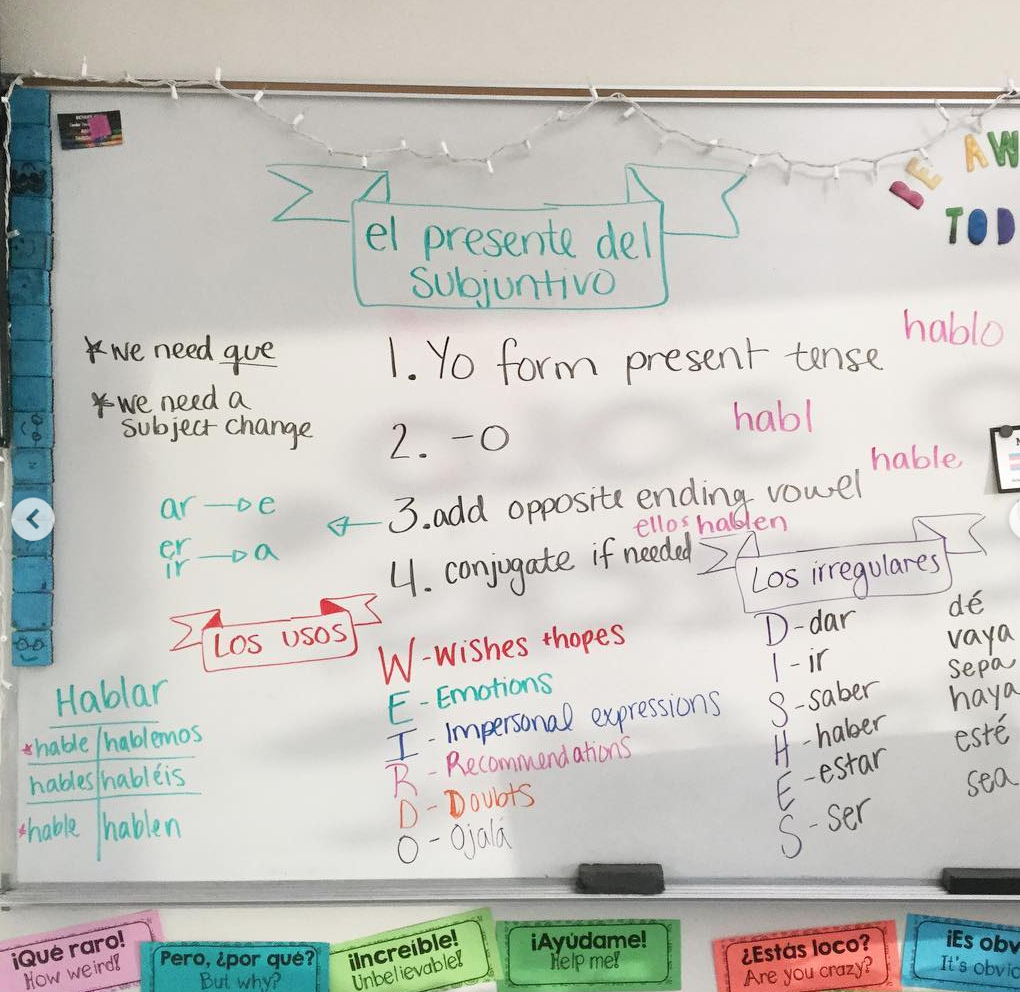
After our warm-up discussion based on the examples on the left whiteboard, I moved over to the right side of the room. I stood in front of this whiteboard and asked if any student thought they could fill in any piece of the template. Typically, I have students come up themselves and write in anything they think they have figured out. (This photo seems to be all in my handwriting though, so I must have asked for answers aloud this time.)
We started with LOS USOS. Based on the sentence examples we had already discussed, my students were able to decipher what many of the parts of WEIRDO stood for!
We then moved onto LOS PASOS – again, based on the examples, my students were able to help ME fill in the steps! I had to tell them very little. For example, because of the use of tener in the example sentences (tengamos) my students were able to discover that we *must* start in the yo form, because where else would that G come from? They also noticed the ending vowel change, and the common conjugation endings. I guide them in the right direction in these discussions, but they truly are figuring out so much of it for themselves. This makes them feel SMART and CONFIDENT in their language skills!
Then, I asked my students for their “go-to” verb. As in, what is the first verb that comes to mind when you are studying any tense? This class chose HABLAR. I asked them to follow the steps and tell me what the conjugations would be. I then asked if they noticed anything in particular — they told me to star the YO and ÉL form since they were identical.
After los pasos and the verb example, we moved onto the two stars. I said, what are two tips you think we should write based on the examples we examined? Those are the tips they came up with. If a class came up with more than 2 tips, I added another star!
Finally, we moved onto the irregular verbs. I asked students to guess the verbs based on D, I, S, H, E, S. Every class was able to guess every verb except for haber. I then provided them with the yo form of each.
**If you’d like a similar printed version of my guided notes, you can find those here. Be sure to check out the preview because it is slightly different from my whiteboard approach.
SEMILLAS STEP 3: EJEMPLOS
FOCUS: ADDITIONAL INPUT
If you have time here, and if your students need it, you may take the opportunity here to offer additional input. For me, it is usually a short reading passage that I have written myself. I make sure it is chock full of examples in the designated tense, just like the examples on the board (however, connected and cohesive rather than singular sentences.) I sometimes ask my students to do the same thing they were asked to do in the warm-up. Or, I may ask them to do a “Rainbow Reading,” where I ask them to highlight important sentence structures in one color (for this it would be QUE or sentence starters), regular verbs in another color, and irregular verbs in a third color.
I also love to have my students complete puzzles on the very first day of any topic (sometimes even BEFORE the warm-up sentences on the board!) An example for this unit can be found here, with various EDITABLE templates here.
This additional activity, if needed, should be input-focused only. I do not ask them to produce anything just yet- they are just reading and doing their best to interpret and examine.
One more option would be for me to provide additional single phrases aloud. After I provide the example, I could toss our globe (a soft ball) to a volunteer who could tell me the infinitive of the verb I used in the present subjunctive. For example, if my sentence was “Espero que no llueva mañana” the volunteer would say “llover.” “Ella quiere que no tengamos tarea hoy para la clase de historia” –> “tener”. This is a quick and easy way to provide LOTS more input in a short amount of time.
Already, after about 35-40 minutes, my students are much more confident. They have only seen this grammar concept for one class, yet they are talking with one another about patterns and nuances that they notice as they read (or listen). They feel like they are discovering the language. This helps them to be more engaged, and more active participants in their learning experience compared to how they would feel during a lecture or completing drills from a textbook.
** For extra input, you can see my best-selling reading packet here.
I also teach grammar through music as seen here and here.
SEMILLAS STEP 4: “¡SEMILLAS!”
FOCUS: STRUCTURED AND SUPPORTED OUTPUT. The goal is still to build confidence!
Our exit ticket on these days is always an activity that allows my students to communicate using the new concept, even though it is the first day!
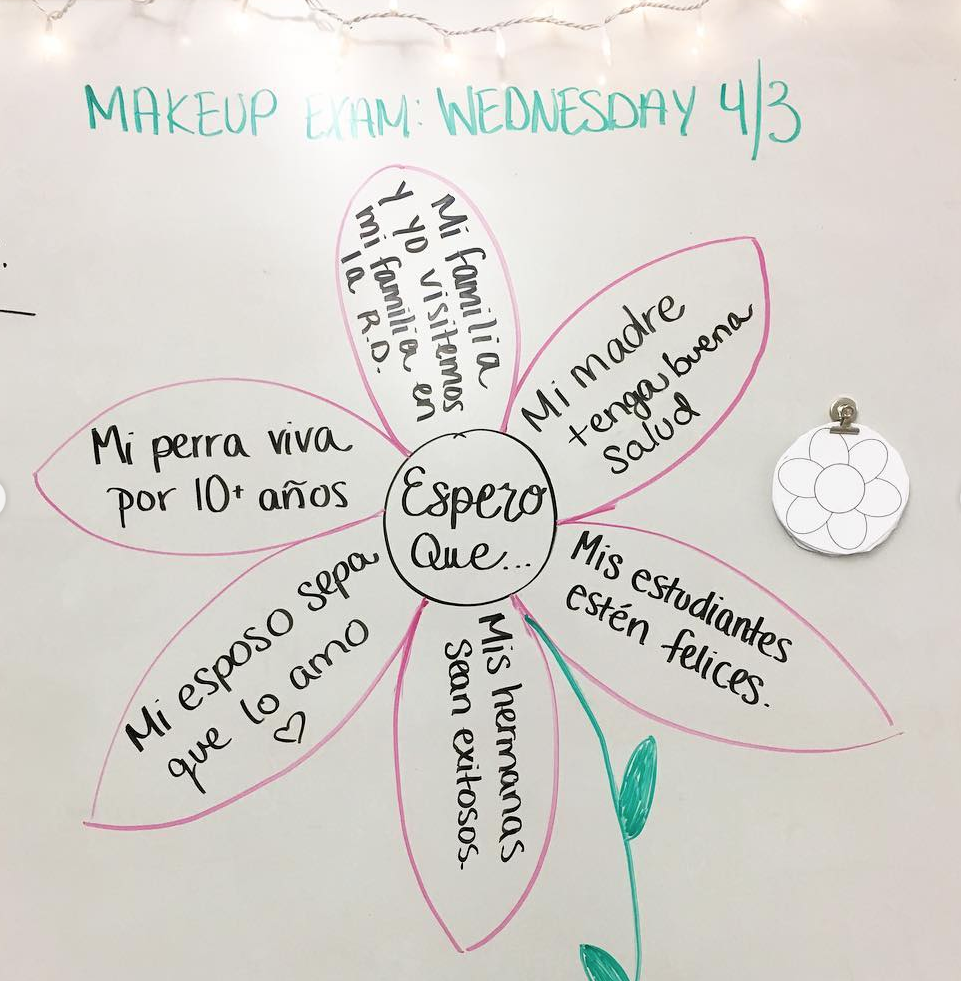
On this day, I erased our examples from the warm-up on the left board, but left the guided notes on the right board for reference.
Where our warm-up once was, I quickly drew a flower and created my own example of what I hoped my students would create. For the sake of DAY 1 in the unit, my students and I focused on the sentence starter “Espero que…” (If it were later in the unit, for some reason, I would provide various options for sentence starters at the center of the flower.)
I had printed and cut flowers for each student before class. My example was ready and waiting on the board, and I read my sentences aloud. I then motivated my students to create their own flowers. They only had about 7-10 minutes to do this, but they were able to do a great job!
I found these flowers online by simply searching “flower template 6 petals.” You can find lots of templates of different sizes, and you can find different options depending on your unit or the time of year. For example, I sometimes use snowflakes. Sometimes it’s leaves, or it’s hexagons arranged to look like honeycomb. Sometimes it’s a clipboard with a checklist (perfect for practicing the present perfect tense, for example.) You can find a way to use any shape, any item, for writing!
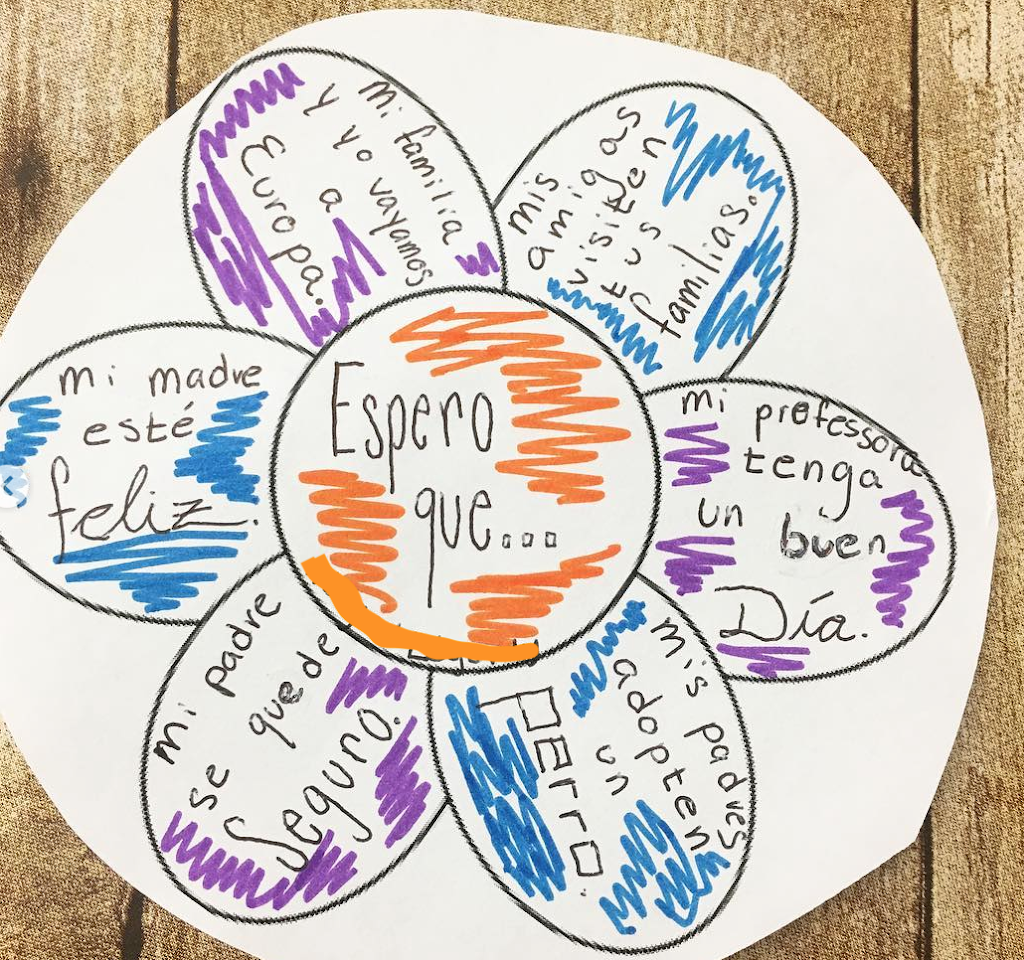
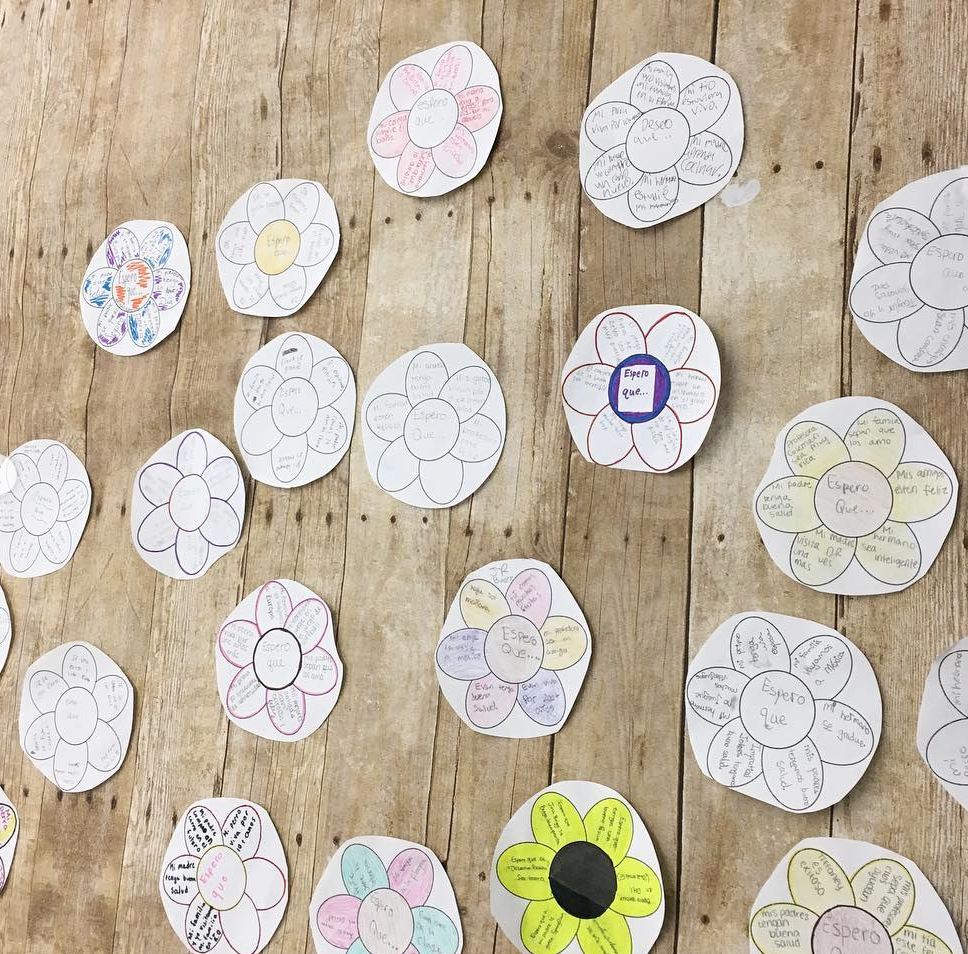
Whatever the unit, I always try to find a quick activity that can help my students build confidence but can also be used as decor in our room. This serves as a reminder, through the rest of the unit, that “Oh yeah, we could use this tense on that very first day! We CAN do this!” This decor also becomes interactive- a perfect warm-up the next day is to have students walk around and read a few flowers, and share what they understand or what they still have questions about!
Timeline
I try my best to complete these activities all in one day, however it sometimes does need to be spread over two class periods. One class may need more time with the notes and review before moving onto producing the language. If a class asks for more input, I do not say no. If they want to slow down and discuss more as a class, we do so. If they want to create examples based on the ones I provided, we do that as a class before moving on to the individual activity. I want to make sure I am building their confidence from that very first day- I don’t want them to feel like “I don’t know what I’m doing.”
I hope you can use some of these strategies the next time you have to introduce a new grammar concept. Grammar doesn’t have to be the enemy, and I personally believe it can still have a home in your modern classroom 🙂
SEMILLAS – SPANISH DIGITAL INTERACTIVE NOTEBOOKS
These Spanish digital interactive notebook resources were designed to align with the strategies in this blog post. There are editable aspects so that you can truly customize for your unique class needs! The interactive notebooks can be completed digitally (via Google Slides) or they can be printed and used as-is.
SEMILLAS brings students through the four steps I outline in this post:
INTRODUCCIÓN: Students first read (editable) comprehensible example sentences and begin to explore the language, and record what they notice
APUNTES: Students make predictions about the language based on evidence from the INTRO page
EJEMPLOS: Students interpret additional comprehensible teacher examples (again editable!), and demonstrate understanding
SEMILLAS: Students create their own examples from our “semillas” and record any remaining questions they have
There are separate student and teacher copies included, with instructions and answer keys for support. Take a look at the video below to see what each notebook contains!
TAKE A CLOSER LOOK
Looking for free resources to try?
Thank you for reading!
I’d love to hear what you think, and what your favorite strategies are for teaching grammar in a comprehensible way! Let me know in the comments!


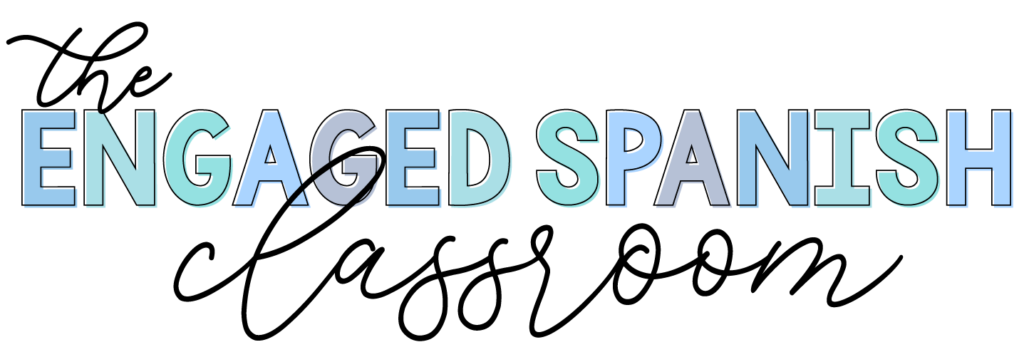
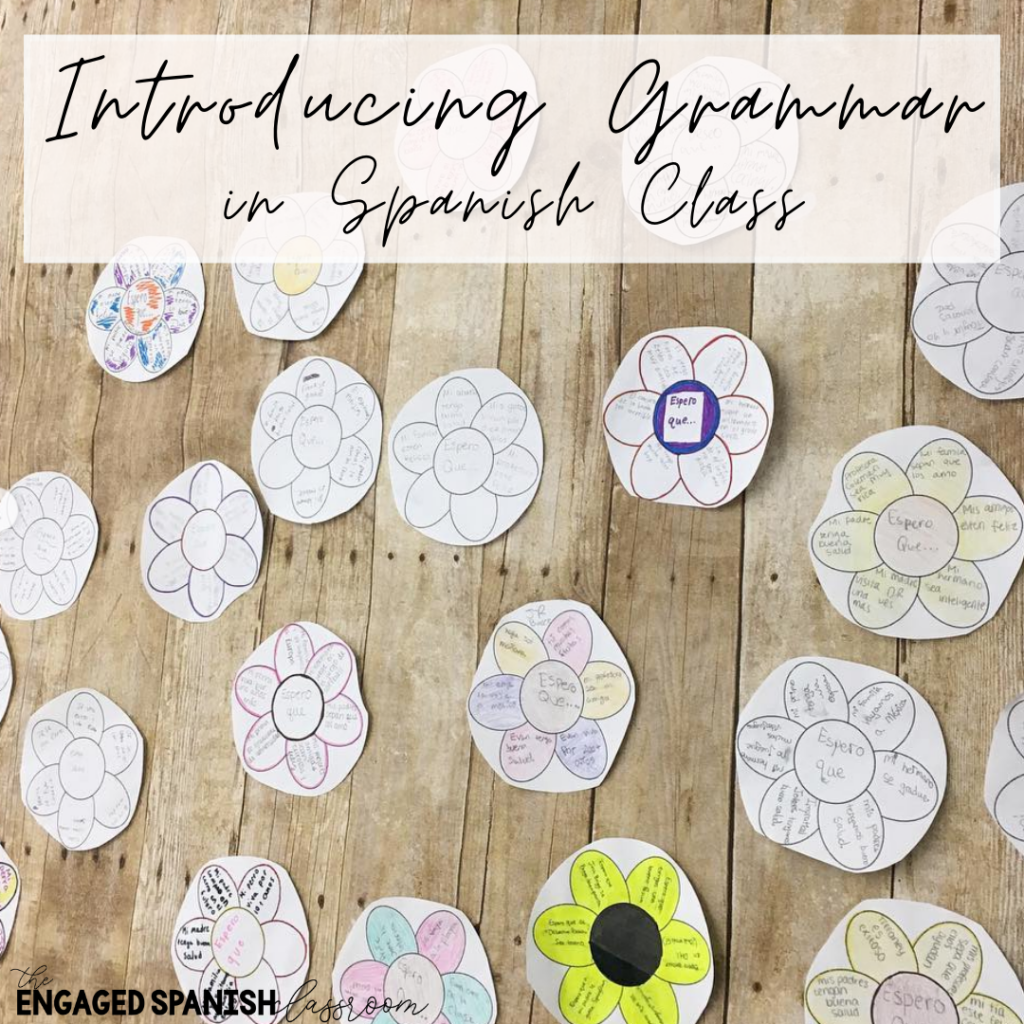
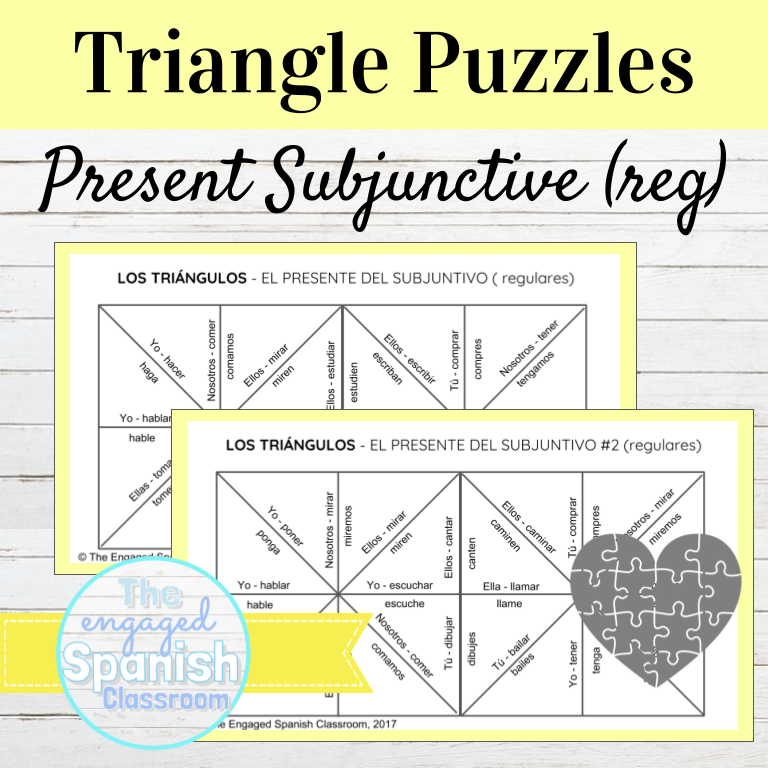
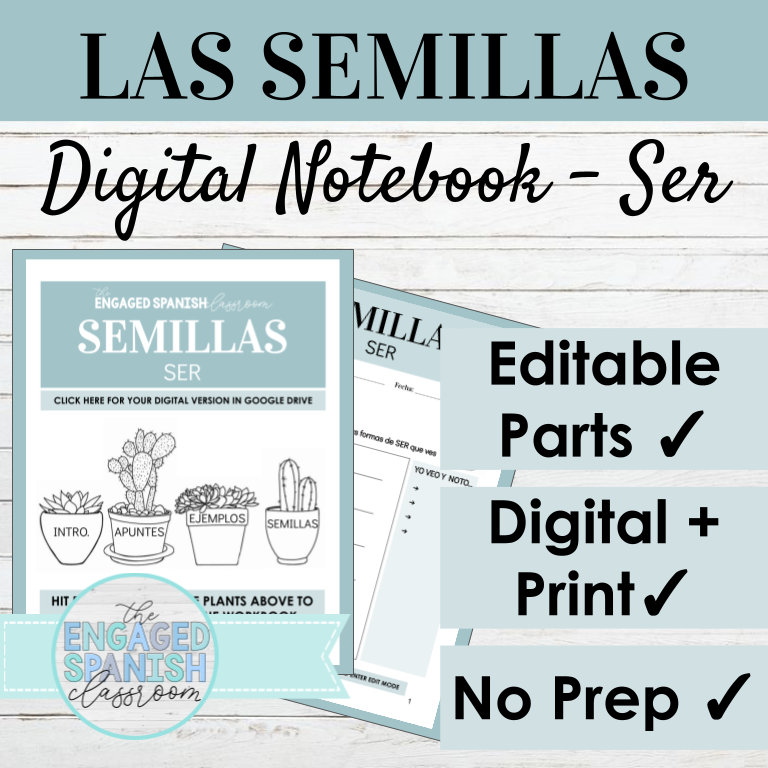
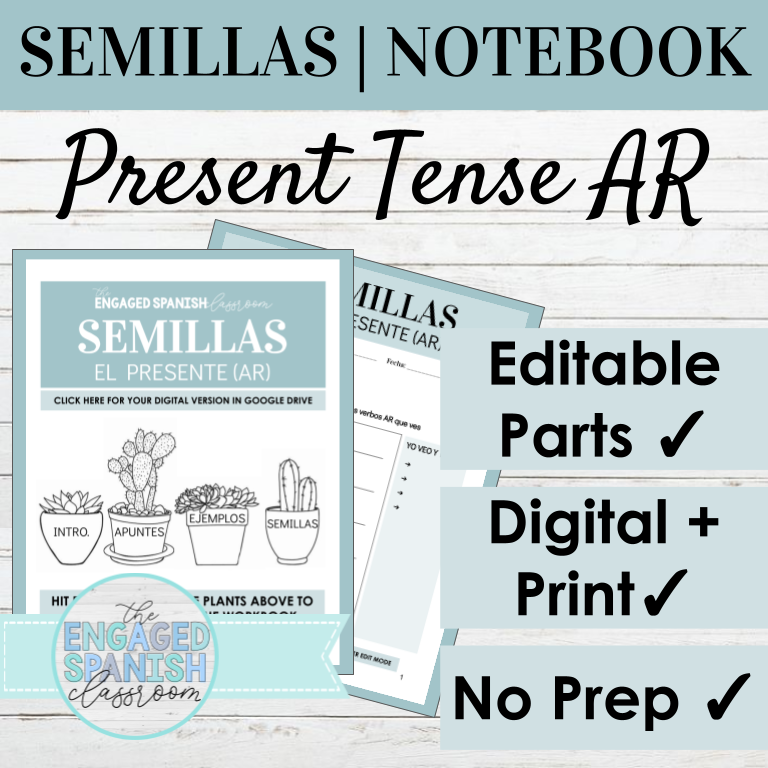
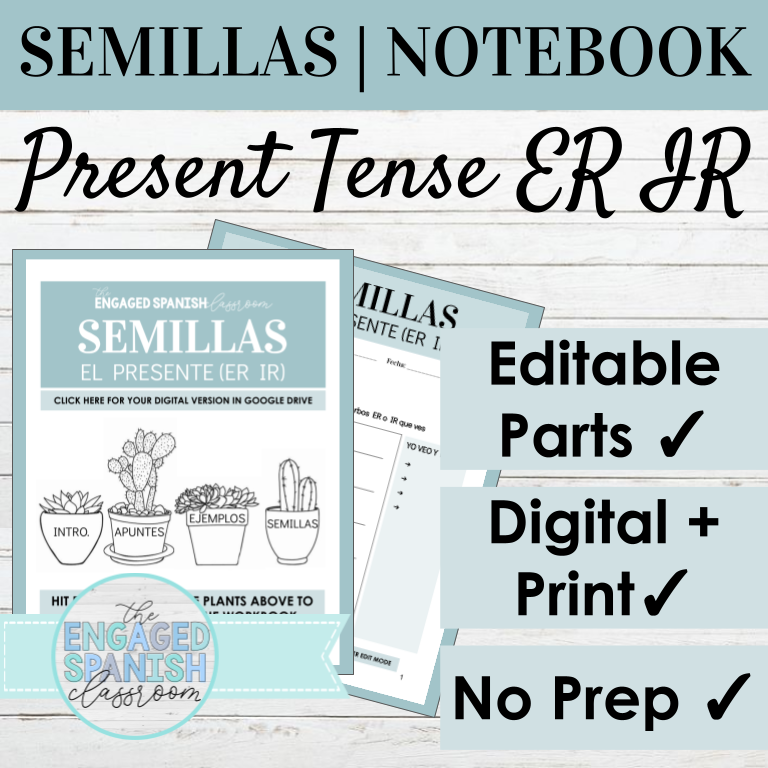
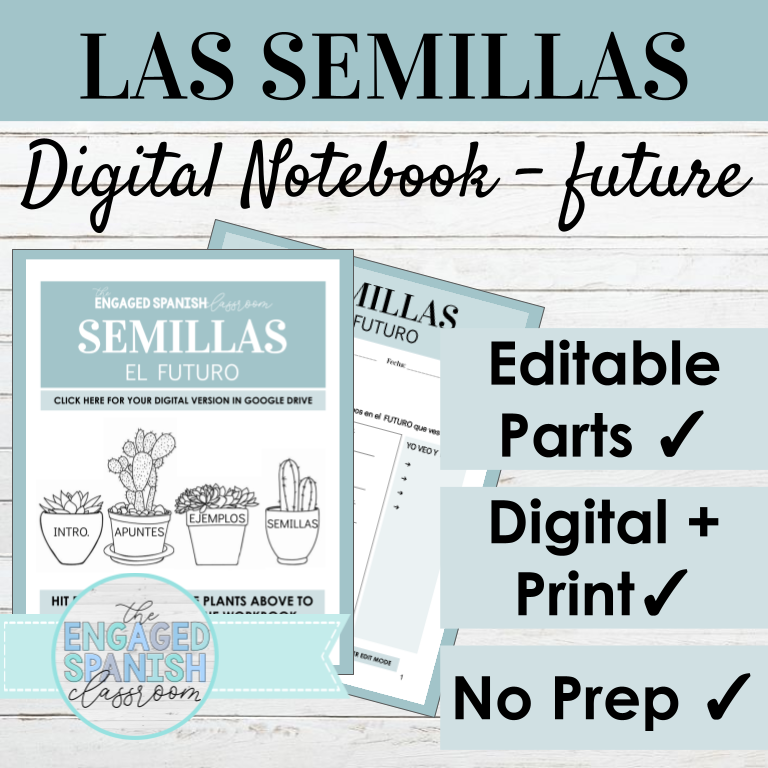
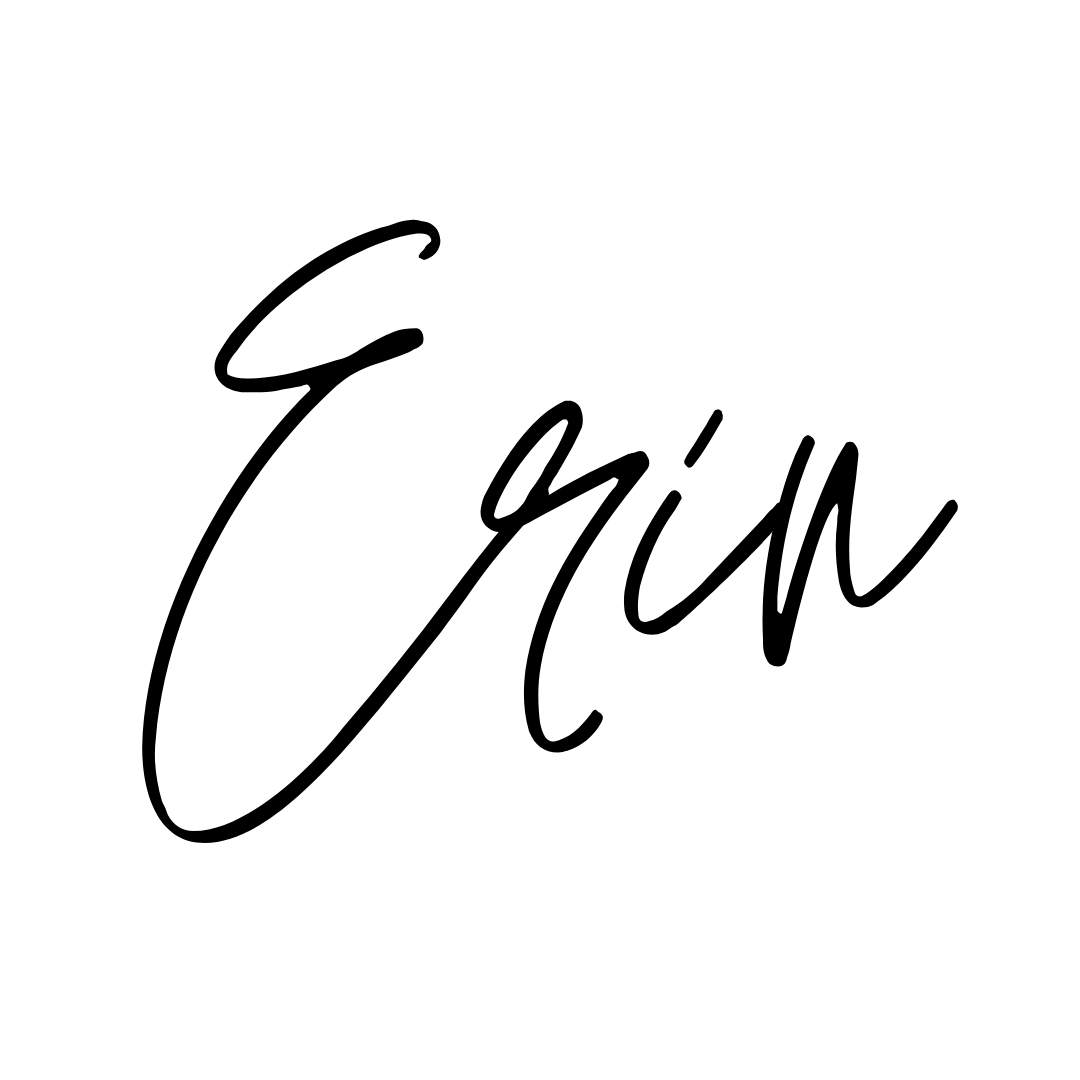

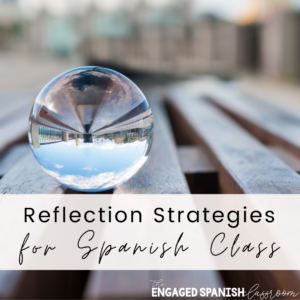
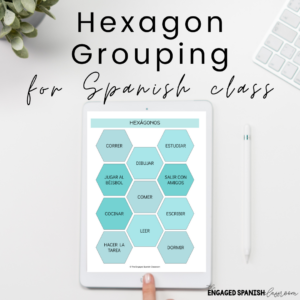


9 Comments
This is so great! Thank you so much! This is such a great way to start subjunctive. I am about to start comparisons and superlatives with Span 3H. Do you have any suggestions on this topic with a travel theme? Gracias de nuevo!
One more thing: do you have anything on TpT for the phrases you have under your white board? I would love to have something I can just print out. Gracias de antemano!
I think it would be awesome for students to make a brochure motivating travelers to choose a specific type of transportation; by train? by plane? by boat? Which is better, quicker easier, more cost effective? Better for the environment? They can think of a million ways to compare them! 🙂 Or they could compare destinations!
Thank you for reading! I have some fun comparison activities here: https://www.teacherspayteachers.com/Store/The-Engaged-Spanish-Classroom/Search:comparativos
Those are actually from "Educando Entre Mundos Tapas for Two!" They are her "rejoinders". I love them too!
Hola! I wrote the two comments above- gracias por responder! I tried your strategy and IT WORKED!! It worked for Span 3H and Span 1H. I was a little concerned about 1H, but I had to try, right?!? I followed up with a quick google form asking if my delivery worked for their learning style and most said 'yes' and provided commentary as to why. I imagine many teachers are in your situation (as described in the blog post), like me, that just need to try it. Gracias de nuevo! Keep the great ideas coming!
YES!!! Amazing news! I am so so glad it went well. Thank you for writing back to me! 🙂